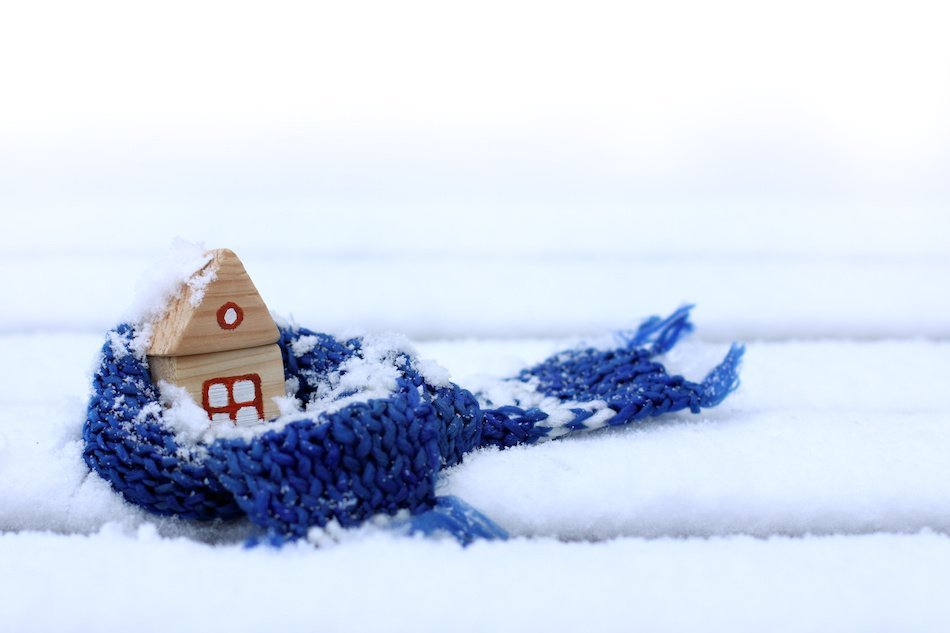Preparing a Home for Winter
Posted by Gary Ashton on Tuesday, January 15th, 2019 at 1:42pm.
 Homeownership comes with many benefits, however, those benefits come with their own responsibilities that homeowners should continuously be aware of. During the wintertime, keeping the warm air in and the cold air, snow, and ice outside takes planning. These aspects of the home call for additional preparation as the weather turns cool.
Homeownership comes with many benefits, however, those benefits come with their own responsibilities that homeowners should continuously be aware of. During the wintertime, keeping the warm air in and the cold air, snow, and ice outside takes planning. These aspects of the home call for additional preparation as the weather turns cool.
What Damage Can Winter Weather Cause to a Home?
Some of the different ways that winter weather can damage a home include:
- Freezing the pipes - Frozen pipes can burst and cause major water damage inside and out
- Broken tree limbs - Ice and snow build up in the trees, causing limbs to break and potentially damaging the home
- Roof damage - When snow is left to sit on a roof, particularly one that already has pine straw or leaves on it, the roof is more susceptible to rot and mold
- Flooding - As snow and ice melts, basements often flood, leading to serious water damage
Understanding how winter weather can damage a home will help homeowners prepare for any potential damage that may occur. If you make sure to make preparations to protect the exterior of the home, you'll be able to protect your household and your investment for years to come.
Proper Insulation
Home insulation, particularly in the attic, acts as the last barrier to comfort in the structure. If the home's existing insulation is insufficient or damaged, every other system is going to have to work harder to maintain the same temperature. Adding insulation where needed is often a simple and effective investment. It promotes a higher rate of energy efficiency, as well as making every room feel cozier.
Prevent Air Leaks
Standing next to a door or window in winter can be uncomfortably cool. Air leaks are a common cause. Gaps between the door or window and the home exterior allow air to pass through, making the home less energy-efficient and creating unequal heating throughout the rooms. Homeowners can save money and improve comfort by putting weatherstripping on doors and windows, or using caulk to seal cracks. Investing in storm doors or windows may offer even better protection.
Keep an Eye on Plumbing
The plumbing of the home could sustain the hardest hit from freezing weather, so it needs extra protection. Franklin homeowners would be wise to visually inspect their interior plumbing to confirm that the temperatures of kitchen cabinets are sufficiently warm. They can ask a plumber to help protect exposed plumbing that may get too cold. Insulating an older water heater will minimize heat loss when people in the household need access to plentiful hot water the most.
Heating
The home's heat source serves to prevent freezing from happening. Whatever the heat source, homeowners ought to aim to keep the temperature of the plumbing above 55 degrees at a bare minimum. Lower than this and the pipes could freeze. People should keep safe forms of home heating running, even if they are on vacation. Requesting annual service for heating equipment and changing air filters on a furnace are practical ways to ensure a season of effective use.
Outdoor Operations
Many people in the U.S. can shut down their yards for winter, but they should do it appropriately. Patio furniture and decorations can be cleaned and put away in the fall. Sprinkling systems should be shut off and drained to prevent frozen pipes. Hoses must be disconnected, drained, and stored for the new year.
A little prevention can eliminate a lot of heartache, particularly during the cold weather. These tips help homeowners determine how they must prepare their homes for winter.

Gary Ashton
The Ashton Real Estate Group of RE/MAX Advantage
The #1 RE/MAX team in the World!
